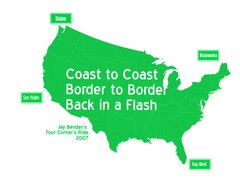


 For generations natives living on reservations in New Mexico and Arizona have come to Richardson's Trading Post in Gallup, New Mexico to do business.
For generations natives living on reservations in New Mexico and Arizona have come to Richardson's Trading Post in Gallup, New Mexico to do business.Much of the business is borrowing money. For collateral the natives pawn their jewelry, their saddles, their rugs, their baskets, their pottery and their rifles. When the pawn is not redeemed, it becomes "dead pawn," and the goods are sold.
I delayed posting a report on my visit to Richardson's because I purchased a necklace for Anne, and I wanted it to be a surprise. I asked for a Navajo hishi necklace only to learn that what I wanted was not hishi. What I was looking for was a necklace made from strands of thin silver. For years I have described such necklaces as hishi. But, it turns out I was wrong. Hishi refers to a beaded necklace. The necklace I was wanting is called liquid silver because the fine strands of silver appear to flow around the neck of the wearer.
Richardson's, on historic Route 66, has been in business since 1913. The few photos I have posted here cannot do justice to the thousands of magnificent rugs, baskets and pots on display. For a better feel of the place, go to www.richardsontrading.com. Most of what is for sale at Richardson's is not dead pawn. Mark King, a retired banker now working at Richardson's, who is shown explaining a "Storm" design rug told me that 95 percent of the jewelry pawn is redeemed and overall only two percent of the pawn becomes dead pawn.
For years I have collected Navajo rugs and pottery from the pueblos of New Mexico and Arizona. I was greatly tempted to detour from my westward journey to go to Crown Point on the Navajo Reservation for the monthly rug auction that was being held the evening of the day I was in Gallup.
The Navajo rug in my den at home came from a Crown Point auction several years ago. On the way to the auction Ray and I met one of our literary heroes, Tony Hillerman, in a Navajo co-op in Thoreau, New Mexico. Tony was waiting for us at Crown Point and gave us tips on how to deal with the prospect of bidding on hundreds of rugs from all parts of the vast Navajo nation.
Tony Hillerman's novels are set in the Navajo nation and have as their central characters two tribal police officers. Tony is not a native, in fact he is a transplanted Okie, but he captures the landscape and the people to give a rich texture to his suspense stories. If you haven't read a Tony Hillerman novel, you have missed a wonderful opportunity to be entertained and educated. I'd recommend "Thief of Time," but that is probably because I like its setting in Chaco Canyon and its connection to pottery.
There are several traditional designs for rugs. Some designs, such as "Two Grey Hills" and "Teec Nos Pos", are named for the trading posts in the areas where the rugs are made. The rugs are made from thread spun from the wool sheared from sheep on the reservation. In antique rugs the colors came from dyes made from plants, but some commercially prepared dyes may be in use now. The looms on which the rugs are woven by hand are made from logs and are most often outside the hogans in which the weavers live.
In the storm design rug being shown by Mark King each of the Dine's (the name the Navajo call themselves) four sacred mountains is depicted. Lightening is portrayed in the center of the rug to represent the storm. The border of almost all of the designs has a break where the spirit is able to leave the rug.
Mark King told me there were about 2500 saddles on pawn, and a small section of the storage room for saddles is shown in one of the photos above. And, in case you ever have a desire to purchase a buffalo hide, as the sign says, you can purchase one at Richardson's.
The temptation to stay at Richardson's or go to Crown Point was great. For the sake of my budget and my schedule, I shipped a small gift home, rode a short section of old 66, returned to I-40 and headed west.


No comments:
Post a Comment